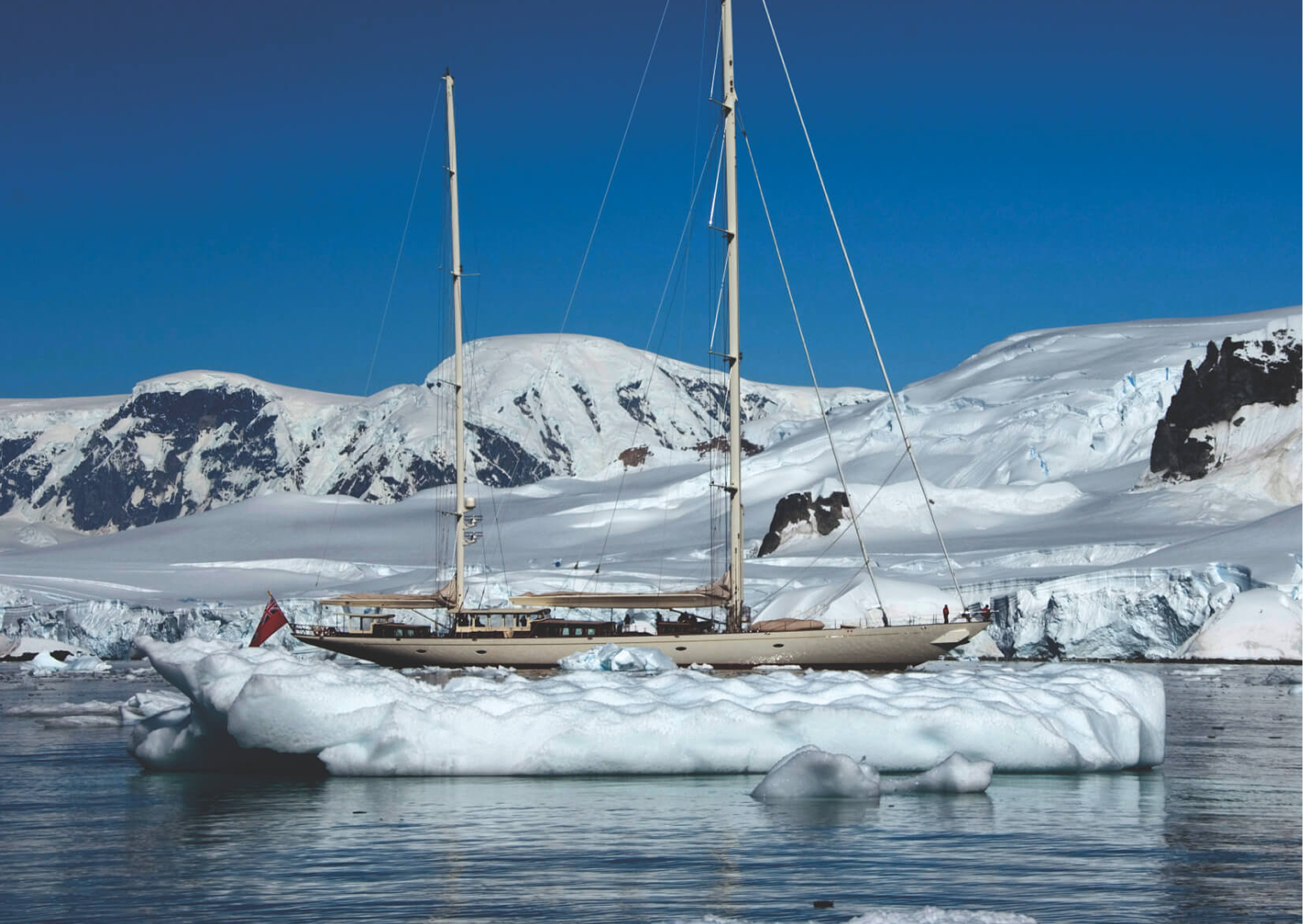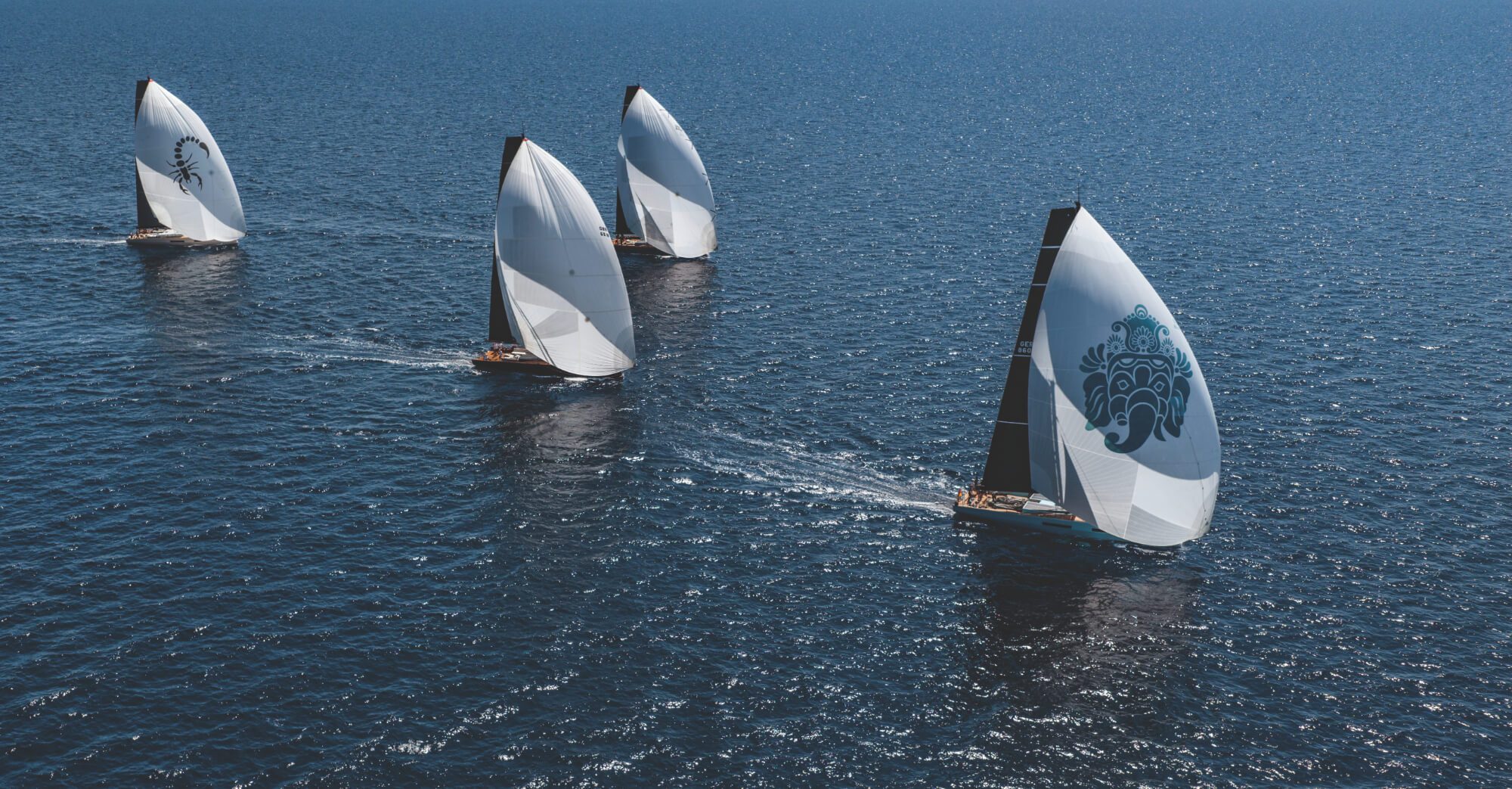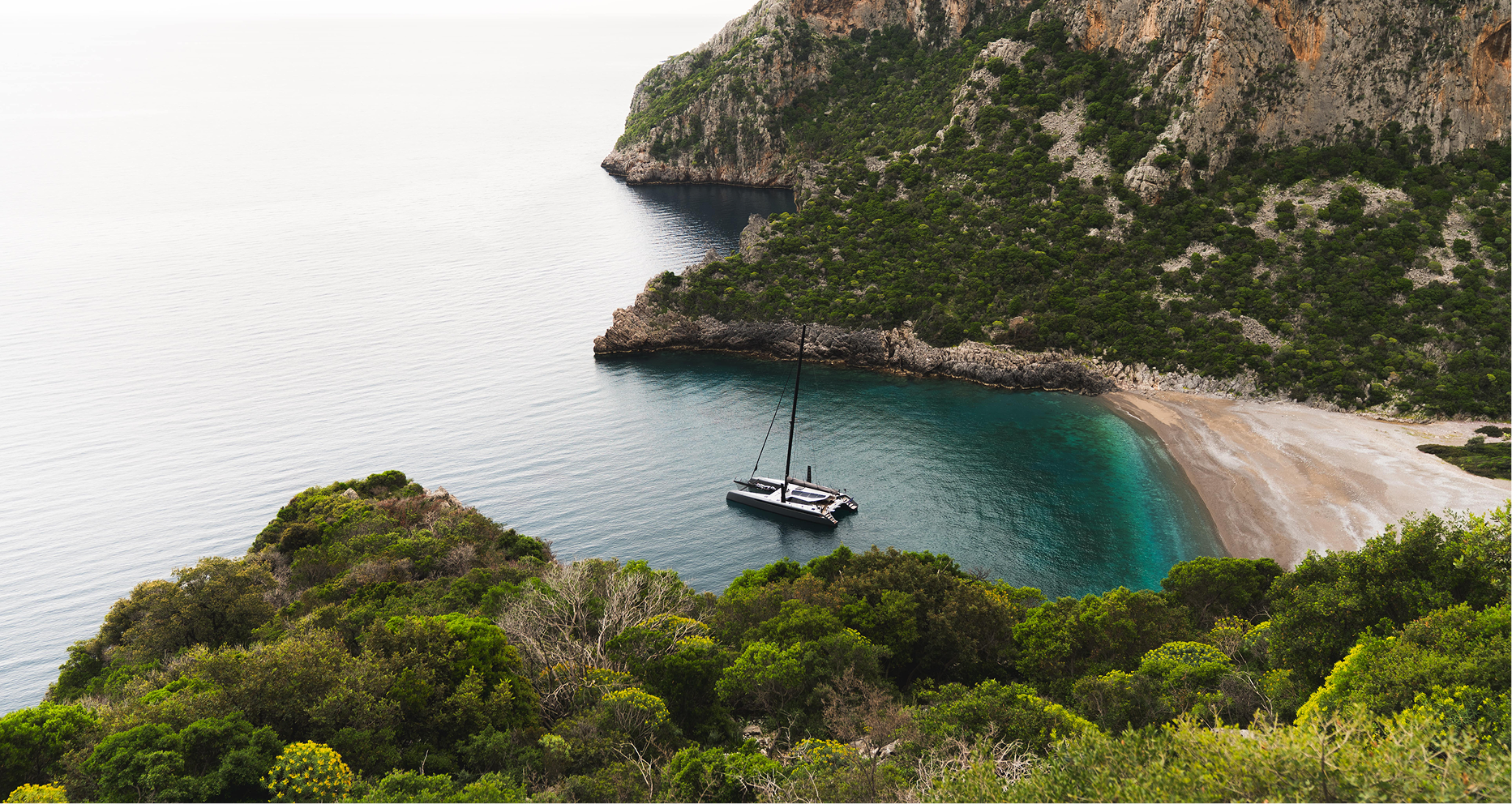Possessing both classic lines and thoroughbred racing credentials, a J in some ways epitomises the high romance of yachting. In fact, the J-Class era, from 1929 to 1939, is often referred to as the premier decade of Superyacht racing. Their designers could not have imagined then that well over one hundred years later, their creations would still be drawing admiring looks and causing Billionaires to swoon. Whether an original yacht which has been rebuilt for the modern-era, or replica incarnations reconstructed more recently from 1930s designs, a number of these magnificent vessels are still racing at a serious level in classic yacht regattas around the world. One such boat is the 2012-built replica J-Class Rainbow.
One of only ten Js built in the 1930s, the original Rainbow was designed for millionaire owner Harold Vanderbilt in 1934. Rainbow was his third J Class and was no slouch around the racecourse, going on to win the America’s Cup in 1934 after a famous tussle with the English-owned Endeavour. Like many of these steel-hulled leviathans, Rainbow was sadly scrapped and her steel repurposed to aid the war effort. In fact, as a result of this trend only three of the original builds have survived – these being Endeavour, Shamrock V and Velsheda. Fortunately, since then a second generation of yachts, including Rainbow, have been built to strict J-Class Association performance rules; these yachts are really the reason that there is even such a thing as a J racing scene.
A classically stunning vessel in terms of her looks, which remains faithful to the original design, Rainbow is also the ultimate racing yacht, embodying the majesty and tradition of the class while possessing all the cutting-edge technology and design improvements of a twenty-first-century racing Superyacht. In keeping with the original 1930s yacht, the replica Rainbow also retains a mahogany interior with Art Deco detailing – making for a tasteful and true recreation that is aesthetically almost identical to its forebearer.
However, that is probably where the similarities end. Rainbow was the first J to have a unique hybrid propulsion and power system, and she boasts state-of-the-art navigation, hydraulics and rigging. Her lines have been smoothed to modern hydrodynamic standards, gliding through the waves a great deal faster than her precursor would have managed.
As one of the most sought after and renowned photographers in the yachting sphere, Jeff Brown has embarked on hundreds of Superyacht voyages over his 20 year career. He knows his halyard from his sheet, and has witnessed these stalwarts in action at many racing events. “I have been lucky enough to have photographed most of the fleet at a distance from both air and water, most recently during the St. Barths Bucket,” says Brown. “But to have the opportunity to actually sail aboard is the stuff of dreams, so when I was approached to capture Rainbow in all her glory from on board I had no hesitation. And I can certainly vouch for the fact that sailing the reinvented classic was for me the pinnacle ofadrenaline overload.”
Brown was commissioned to shoot Rainbow from bow to stern, inside and out while she was in Antigua. “The setting was fantastic, and fortunately we had some great wind on the day we sailed,” says Brown. “I normally like to get a feel for the yacht I am shooting by spending time on board, so I tend to leave the aerials to the end of the shoot (weather permitting).” The interiors and deck shots were therefore captured while Rainbow anchored in sheltered Carlisle Bay. “I also took the opportunity of the calm waters in the anchorage to take detail shots and also some half water shots. Like many of her class, Rainbow has such beautiful lines, and I wanted to capture her shape as much under the water as above.” Brown also recalls that the decks really came alive during twilight. “The light from the interior against the Caribbean sky made for some really great images,” says Brown. With Rainbow’s vast expanse of teak deck stretching from bow to aft, the light grey caulking between the teak planks, and bead-blasted deck equipment, she looks as classic as her ancestor.
However, it’s when the sails are raised that Rainbow really comes into her own. “I wanted to catch the action from on board – which was tricky at times as she can really heel over, making moving around with camera equipment difficult, but I managed to get some nice action shots without getting the camera too wet.” Up in the helicopter, Brown also managed to really capture the essence of the class. “The dramatic heel of the yacht when she is under full power really is an awe-inspiring sight, especially when viewed from the air,” says Brown. “This was the best part of the shoot for me; the winds were perfect and the light was great. I spent just under an hour overhead shooting as much footage as I could.”
“It really is hard to pick my favourite specific moment shooting Rainbow,” says Brown. “One image that really stands out for me though is the shot against the sun – it really shows her lines – while a memory that also sticks in my mind is hovering in the helicopter just off her bow as she was hitting the swells into wind and coming straight at me. It made for a fantastic shot and I look forward to capturing her racing with theother J’s.”
Brown won’t be waiting long. Currently undergoing an extensive refit in Palma to bring her up to the latest racing standards, Rainbow will likely be ready to return to the high seas by late summer 2023. “We aim to be back in the water by July, and will start training for this with our race crew as soon as possible,” says Captain Mathew Sweetman, who is currently managing her refit, in collaboration with Jeroen de Vos from Dykstra Naval Architects. The naval architects have over 30 years of J-Class experience and Gerald Dykstra can be credited for the rebuilds of Endeavour, Shamrock V and Velsheda. After completing the rebuilds of the three originals, Dykstra began their first new build with Hanuman, quickly followed by Rainbow, and they have also been heavily involved in the new J-Class based rating system. “Over the years the Dykstra team have gained an enormous amount of hands-on information by racing on all the Dykstra J’s in the current fleet ourselves,” says de Vos. “The new rule is designed to bring fair and close racing to the fleet and to give all designs a chance of winning (on a handicap-based system). This is in everyone’s interest, as everyone involved wants to see close racing rather than a procession”.
“The essence of the rules have not changed, but to keep the boats racing closer, the class has had its own rules made, and these continue to evolve under the direction of the racing class and yacht owners,” explains Captain Sweetman. “Rainbow last competed in J-Class regattas between 2012 until 2014. Almost ten years on and the boats are sailed quite differently – the sail technology has changed in the interim and we are upgrading the necessary components to ensure we remain competitive with our peers on the racecourse.”
“With her impressive performance, hybrid system and luxurious comfort and style, Rainbow is truly unlike any other J-Class, whether a replica or original,” concludes de Vos. We will have to wait and see how she performs when the J’s vie for position at the World Championship, set to take place during the 37th America’s Cup period in 2024.









